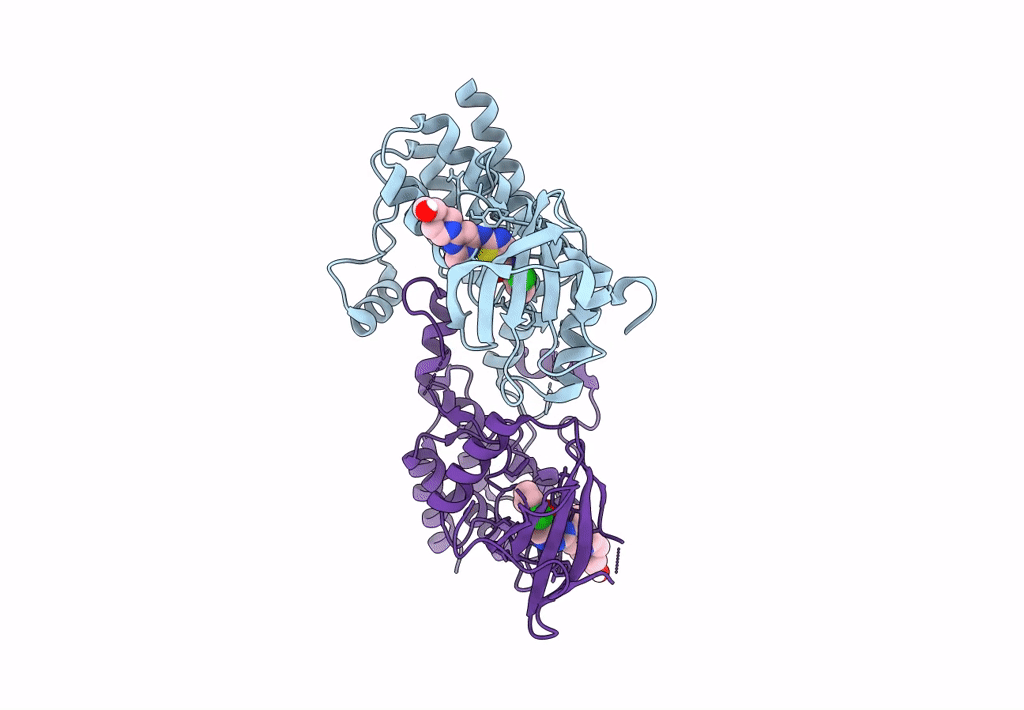
Deposition Date
2023-03-28
Release Date
2023-08-16
Last Version Date
2024-01-31
Entry Detail
PDB ID:
8S9F
Keywords:
Title:
Crystal structure of the kinase domain of Bruton's Tyrosine Kinase bound to dasatinib
Biological Source:
Source Organism:
Mus musculus (Taxon ID: 10090)
Host Organism:
Method Details:
Experimental Method:
Resolution:
2.60 Å
R-Value Free:
0.28
R-Value Work:
0.24
R-Value Observed:
0.24
Space Group:
P 1 21 1


